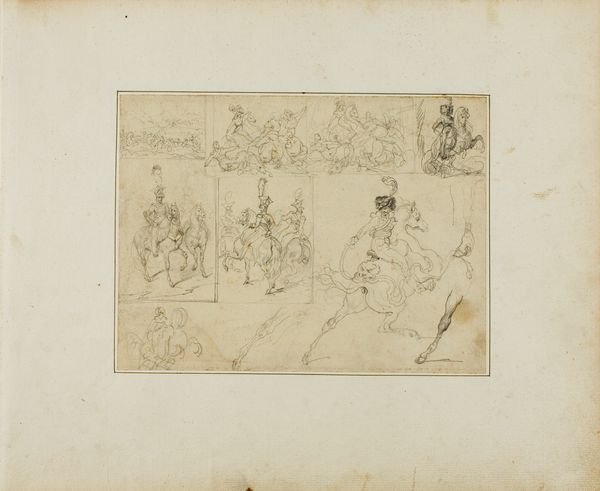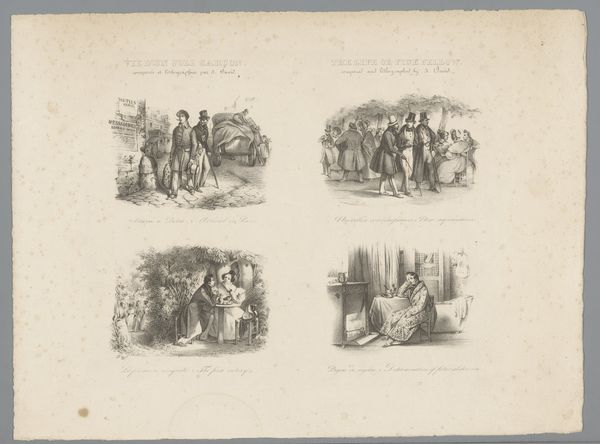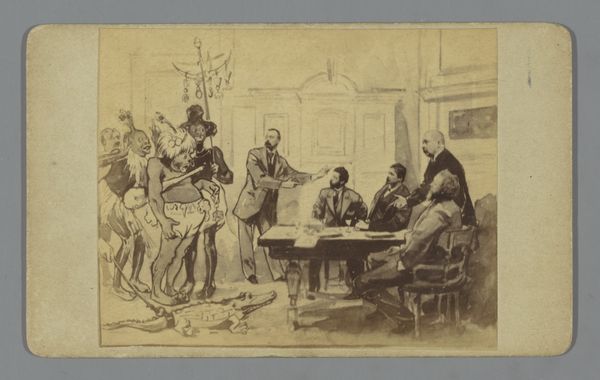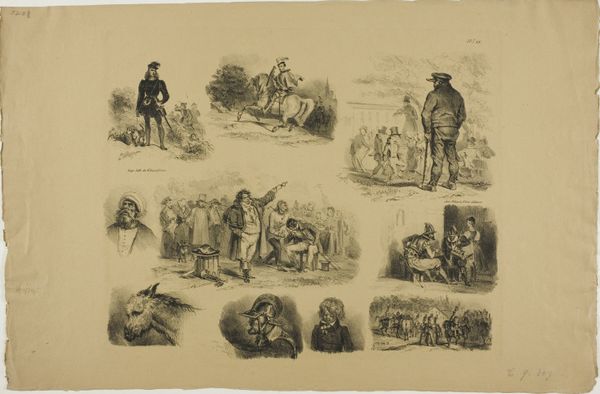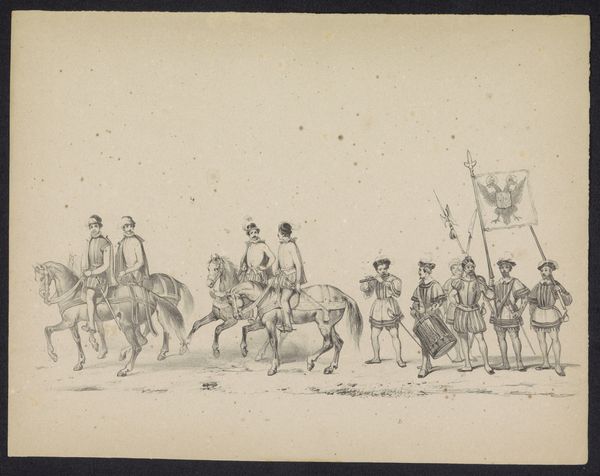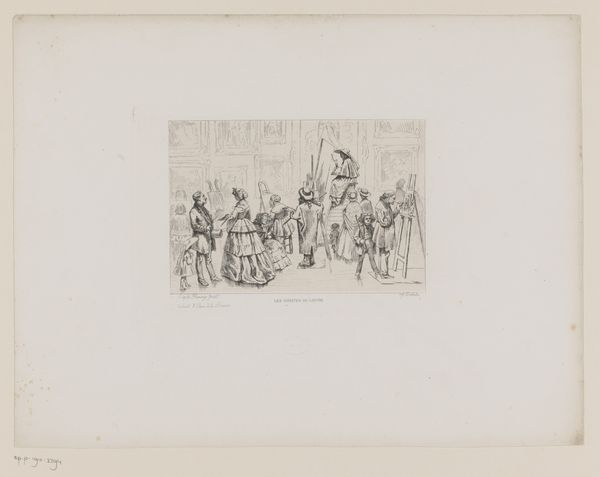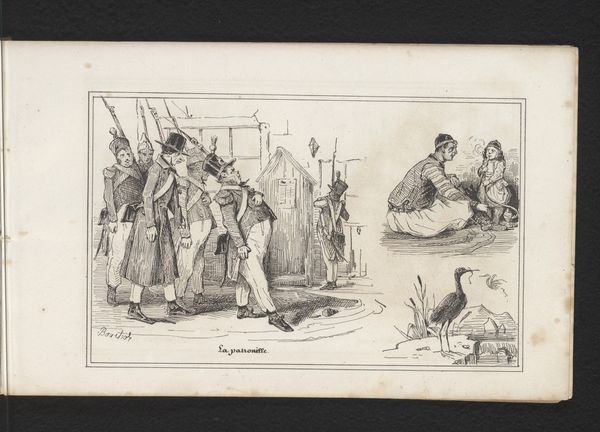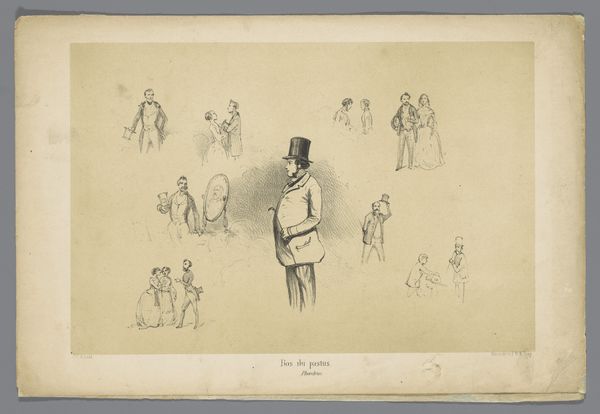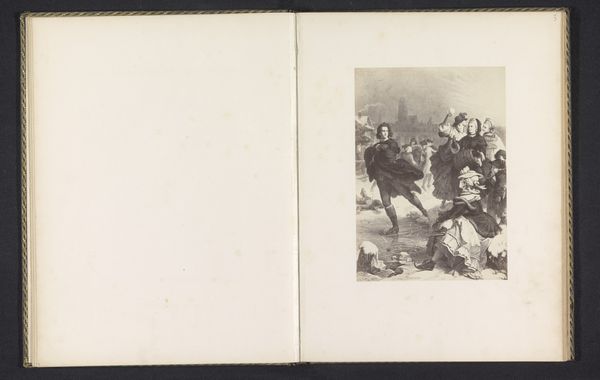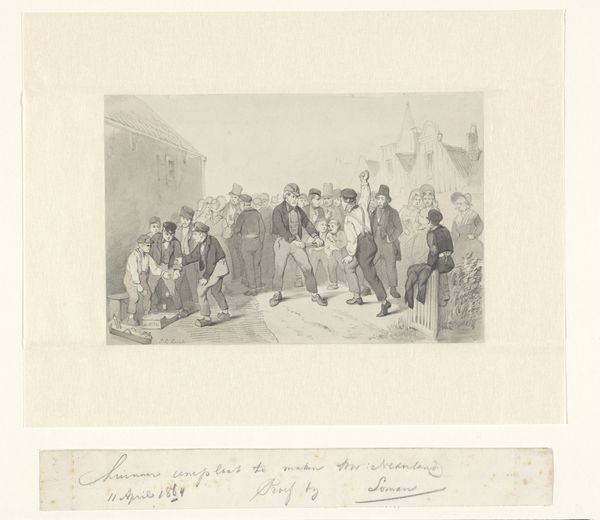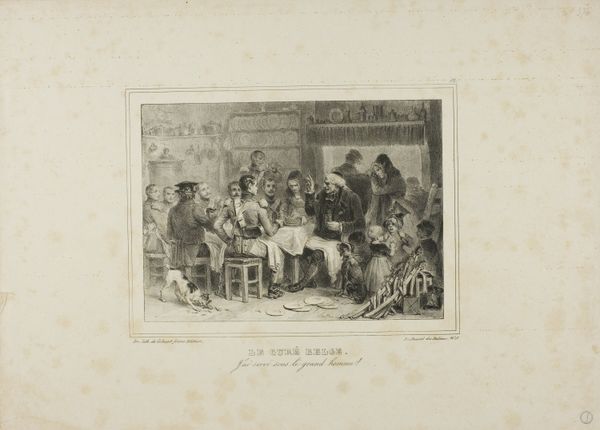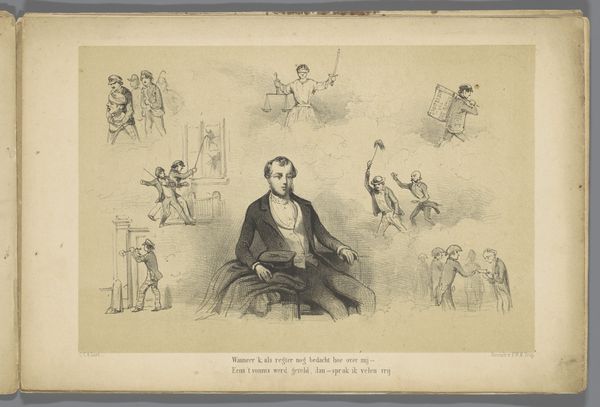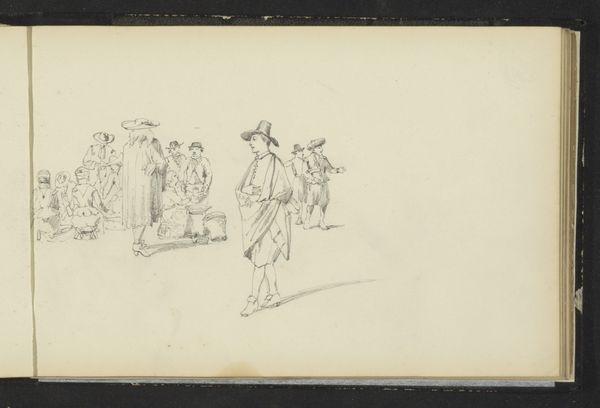
drawing, ink, pen
#
drawing
#
narrative-art
#
pen sketch
#
figuration
#
ink
#
romanticism
#
line
#
pen
#
history-painting
Dimensions: height 222 mm, width 538 mm
Copyright: Rijks Museum: Open Domain
Editor: Here we have an ink and pen drawing entitled "Sleutel voor het schilderij van de Slag bij Waterloo, 1815," created sometime between 1825 and 1850 by an anonymous artist. It looks like a guide to a larger painting. What do you see in this piece, particularly concerning its historical context? Curator: It’s fascinating to see this ‘key’ presented as a work of art in itself. We often overlook these support materials, but they tell us a lot about how history painting functioned. Consider how national narratives were being shaped in the decades after Waterloo. An image like this provided viewers with a framework, literally a 'key', for understanding the "official" story being presented in grand paintings. It emphasizes the museum's role in codifying and disseminating specific interpretations of history. Who are included, and who are left out? How might the selection and depiction of figures reinforce certain political ideologies? Editor: That’s interesting, that it acts as a form of historical documentation but also as an interpretation of that documentation. So, even this key is a political statement of sorts? Curator: Exactly! The act of choosing which figures to highlight, how to arrange them, and the very style of representation carries ideological weight. The proliferation of such images demonstrates the widespread interest in, and manipulation of, historical memory. Does seeing it this way change your perception of its artistic value? Editor: Definitely. It makes me think about the other layers of meaning beyond just the historical event itself, more like how history is shaped and presented, even now. It highlights how institutions like museums play a huge role. Thanks! Curator: Indeed, looking at it this way pushes us to question how art is mobilized in service of power and memory. A fruitful discussion.
Comments
No comments
Be the first to comment and join the conversation on the ultimate creative platform.
